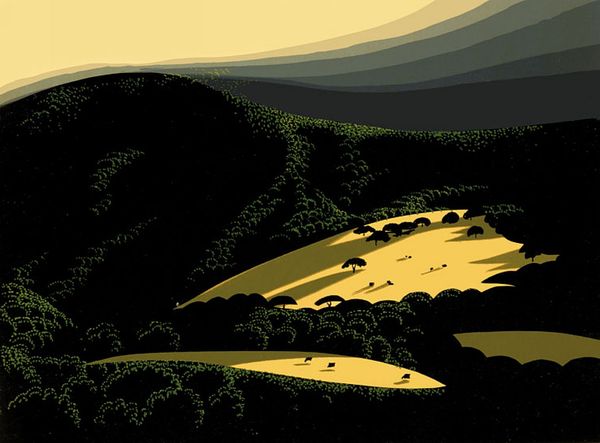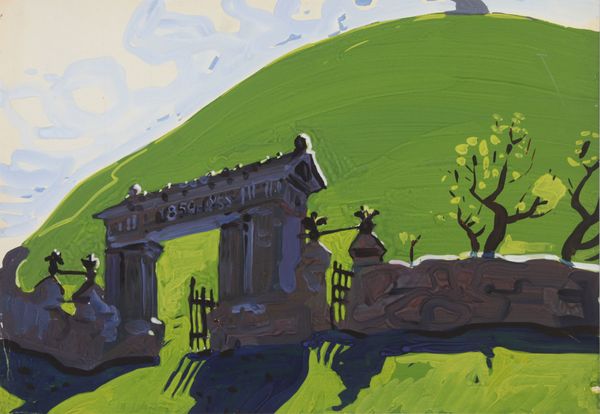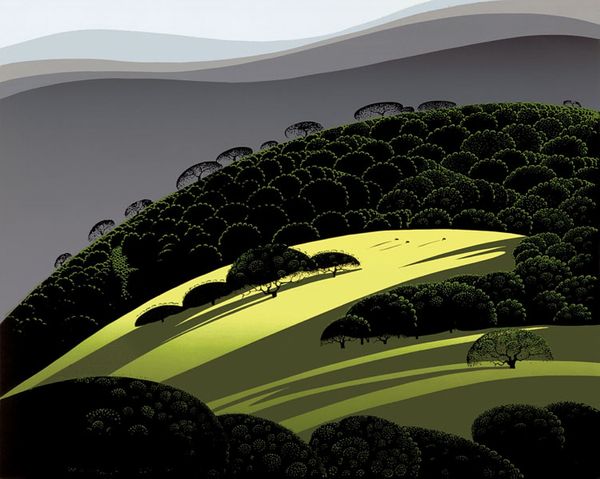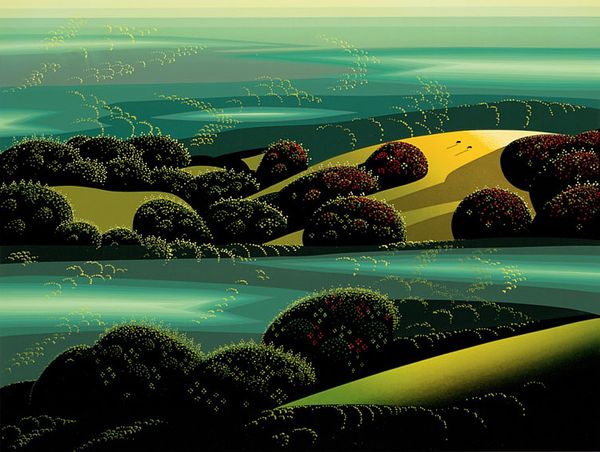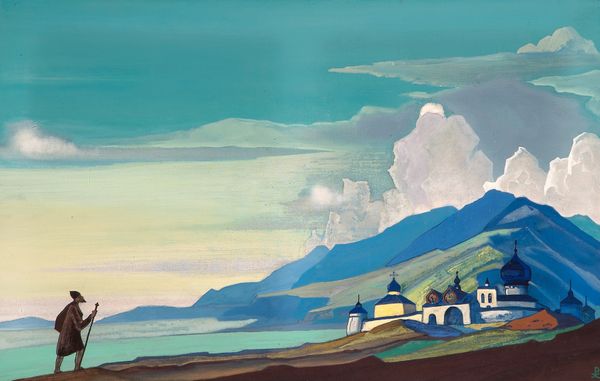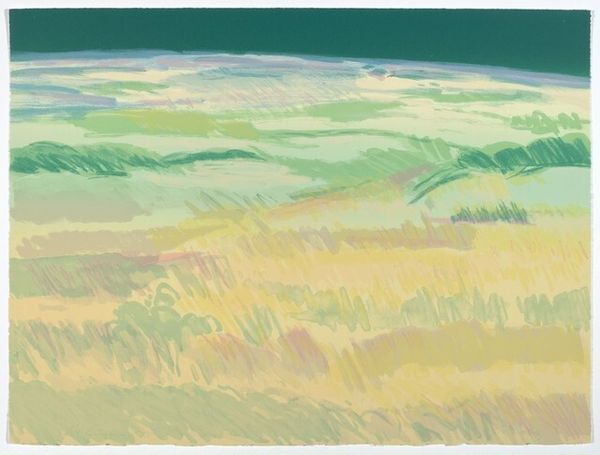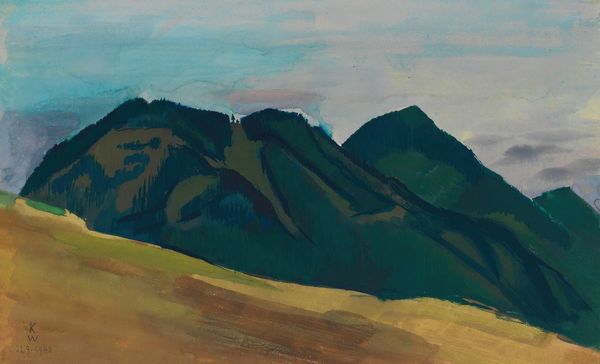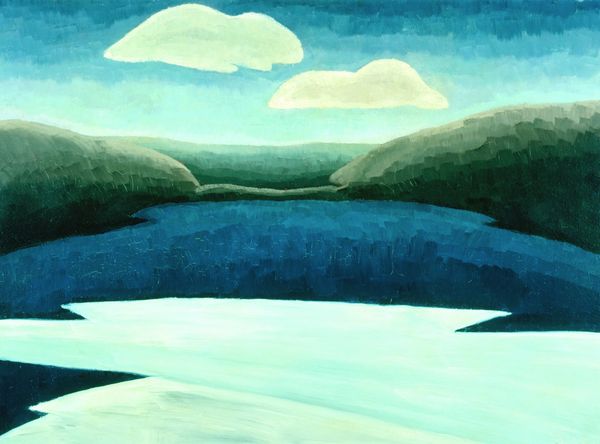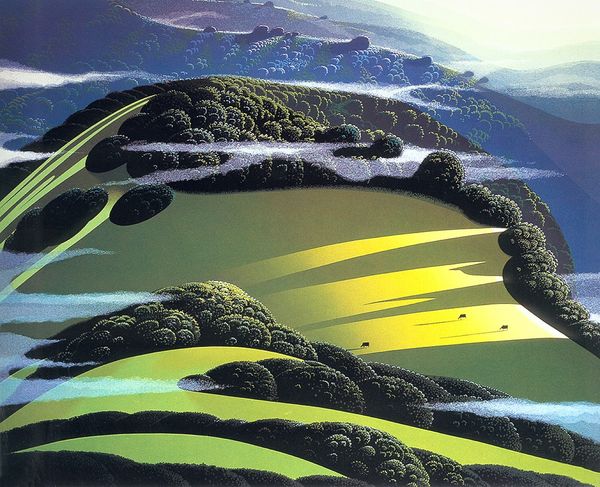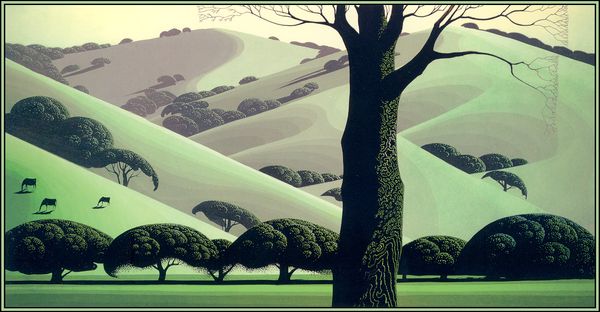
Dimensions: 41 x 59 cm
Copyright: Yuriy Khymych,Fair Use
Curator: Right, let's dive into Yuriy Khymych's "Blue Mountains," created in 1963. It's an acrylic-paint plein-air landscape, and immediately, I’m struck by the directness of the brushstrokes and the evident layering of the materials. Editor: My first impression is the quiet melancholy of it. The cool tones, especially those hazy blue mountain ranges, create a feeling of distance and introspection. It's less a celebration of nature and more a meditation on it, wouldn't you say? Curator: Indeed. Considering Khymych's dedication to plein-air painting, the materiality itself becomes central. Look at the thickness of the acrylic in places; it speaks to the speed and directness of his application on-site. Was he perhaps reacting against the increasing industrialization in Soviet Ukraine, clinging to a more agrarian landscape through his art? Editor: It's fascinating to situate his work in the context of Soviet modernism. While socialist realism was the dominant aesthetic, artists like Khymych found space for expressionism, almost as a subtle act of resistance or preservation of cultural identity against a tide of collectivization. Those rolling hills aren't just scenery; they represent land, history, and connection. Curator: And it's worth examining how the Fauvist influence—the non-naturalistic color choices—contributes to this tension. Is it pure aesthetic preference, or does the departure from realistic representation hold a deeper symbolic significance in a society that heavily regulated artistic expression? Perhaps, it suggests longing for freedom from rigid conventions. Editor: Absolutely. The "Blue Mountains," read through a contemporary lens, presents this tension between artistic impulse and social expectation. Khymych gives us the mountains but filters it through his own emotional and sociopolitical landscape. It’s a powerful statement precisely because it's understated. Curator: I agree; its power resides in how the landscape form allows him the space to express—or perhaps, signal—unease. Editor: I see this landscape now as more than just paint on a canvas. Khymych wasn't simply depicting mountains; he was embedding a narrative of place, identity, and artistic autonomy within its layered surfaces. Curator: A really productive reading. Thank you for your time! Editor: And thank you for focusing our attention on the materials themselves!
Comments
No comments
Be the first to comment and join the conversation on the ultimate creative platform.
